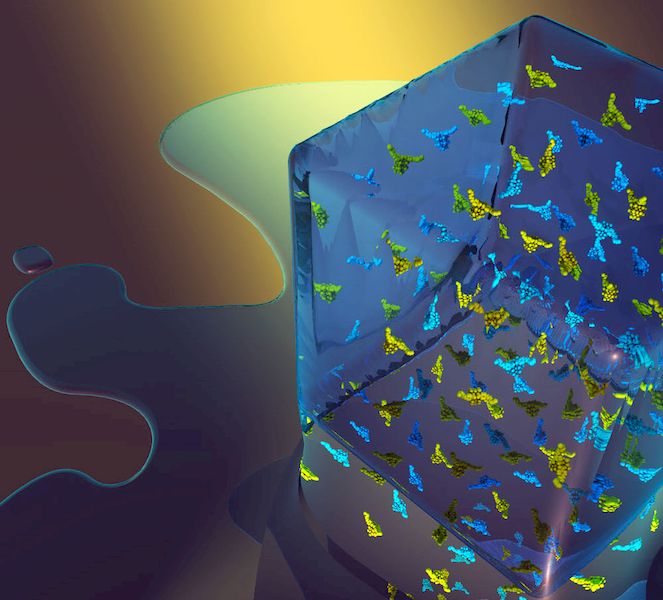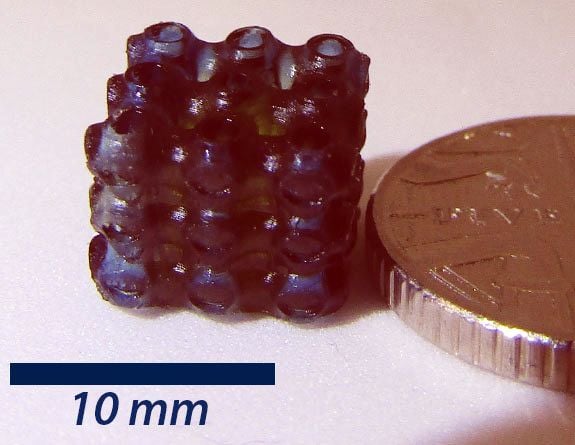
Researchers at the University of Nottingham have developed what might be called “Photochromic 3D printing”.
The researchers were able to new materials containing photochromic molecules. This type of molecule is able to switch states upon stimulation by an external trigger, such as light or exposure to chemicals.
While photochromic molecules are not necessarily new, their functional integration into 3D printable polymers is new. They explain:
To demonstrate their concept, the team developed a photoactive molecule that changes from colourless to blue when irradiated with light. The colour change can then be reversed by exposure to oxygen from the air.
The researchers then 3D-printed composite materials by combining the photoactive molecules with a tailor-made polymer, yielding a new material that can store information reversibly.
You might be wondering how this differs from color-changing filaments that have become commonly available. Those materials are typically used for artistic or entertainment applications, where the entire object slowly changes color. I believe the new research provides for the ability to have very small and complex patterns 3D printed. It also seems that the state switch is far more rapid, as they say:
We can now take any molecules that change properties upon exposure to light and print them into composites with almost any shape or size. In theory, it would be possible to reversibly encode something quite complex like a QR code or a barcode, and then wipe the material clean, almost like cleaning a whiteboard with an eraser. While our devices currently operate using colour changes, this approach could be used to develop materials for energy storage and electronics.
Given the image at top, it’s clear they are on to something quite different that we haven’t seen previously in 3D printing.
It’s hard to imagine new applications for this technology, as it is utterly different than other 3D printing technologies.

The concept of storing energy is quite intriguing, as it may overcome the problems of 3D printing batteries. Some experiments have been done to attempt to 3D print batteries that could be easily embedded into 3D printed functional objects, but I have yet to see any approach reach mainstream status.
A long time goal in 3D printing has been to develop a process for 3D printing functional electronic objects. Some ventures like Voxel8 have produced equipment capable of laying down conductive traces – wiring, essentially, but batteries to power those wires are another matter.
I’m hoping this research makes its way through commercialization so that it can be incorporated into 3D printer products. But it seems to me that the applications of this are so wide that the researchers and initial commercializers will have to focus on one or two specific applications to succeed.
Via University of Nottingham and Wiley

